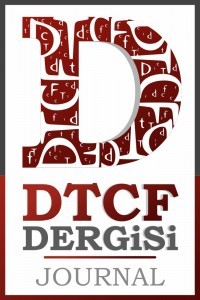Eleusis'de Demeter Kültü ve Kadın Ritüelleri
Yunanistan'ın Attika bölgesindeki Eleusis kenti, tüm Yunan dünyasında saygı gören ve "Tanrıçalar" olarak adlandırılan Demeter ve kızı Persephone onuruna düzenlenen ritüeller ve gizemleriyle ünlüdür. Biçim ve içerik özellikleri bakımından geleneğin Homeros'a atfettiği, ancak gerçekte değişik ozanlarca yazılmış olan otuz üç hymnosun en uzun üç tanesinden biri olan Demeter'e Hymnos, Elelusis'deki Demeter tapınımının en önemli kaynak eseri olma özelliğine sahiptir. Eskiçağ Yunan kadınlarının dinsel dünyaları ve tarımsal takvimin bütün aşamalarına ilişkin eğretilemelerle doludur. Bu bağlamda Demeter'in adına kutlanan toplam sekiz bayramın hepsi söz konusu hymnosa konu olan mitos ile ilişkilidir. Eleusis'deki Demeter kültünün kutlamaları kapsamında düzenlenen sekiz bayramdan ikisi, Thesmophoria ve Haloa bayramları, Yunanistan'ın her yanından gelen evli kadınlara açıktı. Bu iki bayram özellikle oruç tutma, kurban kesme, arınma, yas tutma ve bazı şeylerden sakınma üzerine temellenmiştir.
Anahtar Kelimeler:
Eleusis, Demeter, Kadın Ritüelleri
The Cults of Demeter and The Rituals Held By Women at Eleusis
Eleusis, a city located in Attica, was famous far the rituals and mysteries which were held on Demeter and Persephone, the two goddesses revered and worshipped in ancient Greece. Demeter is the maternal archetype. She represents maternal instinct fulfilled through pregnancy or through providing physical, psychological or spiritual nourishment to others. The goddess Demeter and her daughter Persephone are best known through the Homeric Hymn to Demeter, which is formally and contextually attributed to Homer like other thirty-two hymns, which were,in fact,written by other poets. Hymn to Demeter, which is one of the three longest of the thirty-three hymns is considered to be the most important source to the cults of Demeter in Eleusis. The hymns describes the religious world of women in ancient Greece and is rich in metaphors referring to all the different stages of the agricultural calendar. All the eight religious festivals celebrated to honour Demeter, furthermore, are related to the myth which gives the hymn its topic. All the married women coming to Eleusis from all over Greece used to participate in the religious festivals of Thesmophoria and Haloa, the two outstanding festivals among the eigth. These two festivals were especially based on fasting, sacrificing, getting purified and keeping away from certain attitudes considered to be vice.
Keywords:
Eleusis, Demeter, Women's Rituals,
___
- Bachofen, J. Jakob. Söylence, Din ve Anaerki. (Çev. N. Sarman), İstanbul: Payel Yayınları, 1997.
- Brumfield, Allaire Chandor. The Attic Festivals of Demeter and Their Relation to the Agricultural Year. New Hempshire: The Ayer Company, 1981.
- Burkert, Walter. Homo Necans. Berlin, 1971 Deubner, L. Attische Feste. Berlin, 1932.
- Eliade, Mircea. Dinler Tarihine Giriş. (Çev. L. Arslan). İstanbul: Kabalcı Yayınevi, 2003
- Eliade, Mircea. Edebi Dönüş Mitosu. (Çev. Ü. Altuğ). Ankara: İmge Kitabevi, 1994.
- Farnell, Lewis Richard. The Cults of Greek States. Vol. III. Oxford: Clarendon Press, 1907.
- Foley, Helene P. The Homeric Hymn to Demeter. New Jersey: Princeton University Press, 1994.
- Foucart, P. Les Mysteres d'Eleusis. Paris, 1914. IG = Inscriptiones Graecae.
- Kerenyi, C. Eleuisis: Archetypal Image of Mother and Daughter. New York, 1967.
- Mylonas, George E. Eleusis and the Eleusinian Mysteries. New Jersey: Princeton University Press, 1969.
- Nilsson, Martin P. Greek Folk Religion. New York, 1961.
- Nilsson, Martin P. The Minoan - Mycenaen Religion and Its Survival in Greek Religion. New York:Biblo and Tannen, 1971.
- Picard, C, "Sur la patrie et les peregrinations de Demeter." REG, 40 (1927), 321-330.
- Thomson, George. Aiskhylos ve Atina. (Çev. M.D. Hızlan). İstanbul: Payel yayınları, 1990.
- Yayın Aralığı: Yılda 2 Sayı
- Başlangıç: 1942
- Yayıncı: Ankara Üniversitesi
Sayıdaki Diğer Makaleler
Kabbani'nin Kadınları: Padişahın Karısından Sürgündeki Arkadaşına
Uluslararası Eşitsizliği Derinleştiren Bir Süreç Olarak Ekonomik Küreselleşm
Eleusis'de Demeter Kültü ve Kadın Ritüelleri
Nobel Ödüllü Şair Czestaw Milosz'un Ardından
